
Brokopondo: Suriname's Hidden Gem of Nature and Adventure
Discover Brokopondo: Suriname's hidden paradise with stunning rainforests, diverse wildlife, and rich cultural heritage, perfect for nature lovers and adventure seekers.
Brokopondo is a picturesque district in Suriname that offers a unique blend of natural beauty, adventure, and cultural experiences. Situated in the heart of the country, Brokopondo is home to the Brokopondo Reservoir, one of the largest artificial lakes in the world. The stunning lake is surrounded by lush rainforests, creating a serene and captivating landscape that is perfect for nature lovers and adventurers alike. The district is rich in biodiversity, with a variety of flora and fauna that can be explored through guided tours and nature walks. Bird watchers will be thrilled by the diverse species that inhabit the area, while hikers can enjoy the numerous trails that wind through the dense jungle. The Brownsberg Nature Park is a must-visit, offering breathtaking views of the reservoir and the opportunity to spot wildlife such as monkeys, jaguars, and exotic birds. Brokopondo is also a great destination for those interested in the cultural heritage of Suriname. The local Maroon communities, descendants of escaped African slaves, have preserved their traditional way of life and are known for their vibrant music, dance, and craftwork. Visitors can experience the rich culture by attending local festivals, visiting villages, and engaging with the community. For adventure seekers, Brokopondo offers a range of activities such as kayaking, fishing, and boat tours on the reservoir. The Afobaka Dam, which created the reservoir, is an engineering marvel and a popular spot for visitors to learn about the history and impact of the project on the region.
Local tips in Brokopondo
- Plan your visit during the dry season (August to November) for the best weather conditions and optimal wildlife sightings.
- Hire a local guide to explore the Brownsberg Nature Park for an in-depth understanding of the flora, fauna, and history of the area.
- Respect the local Maroon communities' traditions and customs when visiting their villages.
- Bring insect repellent and wear long sleeves to protect against mosquitoes and other insects in the rainforest.
- Don't miss a boat tour on the Brokopondo Reservoir for a unique perspective of the surrounding landscape and to learn about the Afobaka Dam.
- Pack binoculars for bird watching and wildlife spotting during your hikes and nature walks.
Brokopondo: Suriname's Hidden Gem of Nature and Adventure
Brokopondo is a picturesque district in Suriname that offers a unique blend of natural beauty, adventure, and cultural experiences. Situated in the heart of the country, Brokopondo is home to the Brokopondo Reservoir, one of the largest artificial lakes in the world. The stunning lake is surrounded by lush rainforests, creating a serene and captivating landscape that is perfect for nature lovers and adventurers alike. The district is rich in biodiversity, with a variety of flora and fauna that can be explored through guided tours and nature walks. Bird watchers will be thrilled by the diverse species that inhabit the area, while hikers can enjoy the numerous trails that wind through the dense jungle. The Brownsberg Nature Park is a must-visit, offering breathtaking views of the reservoir and the opportunity to spot wildlife such as monkeys, jaguars, and exotic birds. Brokopondo is also a great destination for those interested in the cultural heritage of Suriname. The local Maroon communities, descendants of escaped African slaves, have preserved their traditional way of life and are known for their vibrant music, dance, and craftwork. Visitors can experience the rich culture by attending local festivals, visiting villages, and engaging with the community. For adventure seekers, Brokopondo offers a range of activities such as kayaking, fishing, and boat tours on the reservoir. The Afobaka Dam, which created the reservoir, is an engineering marvel and a popular spot for visitors to learn about the history and impact of the project on the region.
When is the best time to go to Brokopondo?
Iconic landmarks you can’t miss
Palmtree Garden
Experience the natural beauty and tranquility of Palmtree Garden in Paramaribo, a perfect retreat for relaxation and cultural exploration.

Fort Zeelandia
Discover Fort Zeelandia, a historic fort and museum in Paramaribo, showcasing Suriname's rich colonial heritage and captivating waterfront views.

Brownsberg
Explore the lush landscapes and vibrant wildlife of Brownsberg Park, a haven for nature lovers and adventure seekers in Suriname.

Afobaka Resort
Discover serenity and adventure at Afobaka Resort, where stunning landscapes and modern comforts come together in beautiful Suriname.

Presidential Palace
Explore the stunning Presidential Palace in Paramaribo, a testament to Suriname's heritage and architectural beauty, located in the vibrant Independence Square.
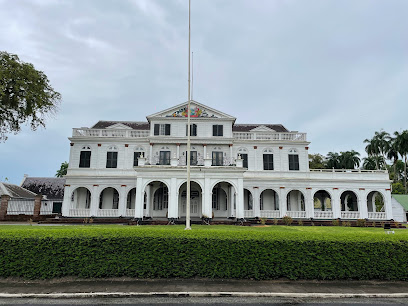
Arya Dewaker Mandir
Immerse yourself in the serene beauty and rich cultural heritage of Arya Dewaker Mandir, a captivating Hindu temple in Paramaribo, Suriname.

Brokopondo Meer Viewpoint
Explore the breathtaking vistas at Brokopondo Meer Viewpoint, Suriname's premier vista point for nature lovers and photographers.

Braamspunt
Unwind at Braamspunt, a pristine beach in Suriname, where tranquil shores meet vibrant nature for an unforgettable tropical getaway.

Bergendal Eco & Cultural River Resort
Discover the lush beauty and rich culture of Suriname at Bergendal Eco & Cultural River Resort, your gateway to nature and adventure.

Brokopondo Lake Wood N V - Factory
Discover the stunning natural beauty and vibrant wildlife of Brokopondo Lake, a tranquil escape in Suriname for nature lovers and adventurers alike.

Unmissable attractions to see
Afobaka Resort
Afobaka Resort: A serene retreat by the Brokopondo Dam, perfect for relaxation, adventure, and savoring Suriname's local cuisine.

Brokopondo Meer Viewpoint
Discover breathtaking views and serene landscapes at Brokopondo Meer Viewpoint, an unforgettable experience in Suriname's lush nature.

Arya Dewaker Mandir
Explore the vibrant culture and spiritual heritage at Arya Dewaker Mandir, a stunning Hindu temple in Paramaribo, Suriname.

Fort Nieuw Amsterdam
Discover the historical significance and beauty of Fort Nieuw Amsterdam, a captivating fortress located at the confluence of Suriname's rivers.
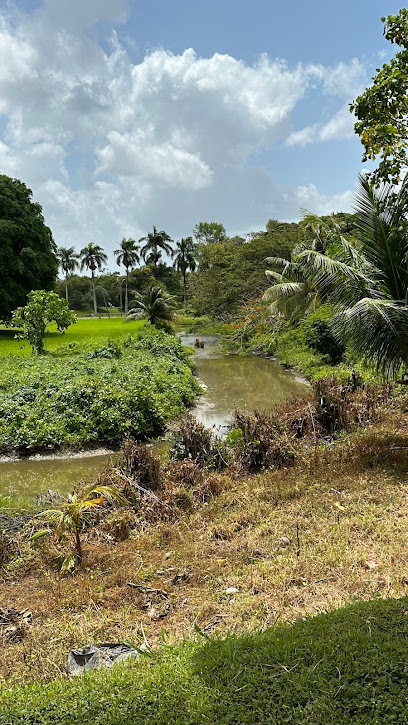
Het Surinaamsch Rumhuis
Discover the fascinating world of rum at Het Surinaamsch Rumhuis, a must-visit museum in Paramaribo, Suriname, celebrating rum's rich cultural heritage.

Galibi Nature Reserve
Explore the untouched landscapes and diverse wildlife of Galibi Nature Reserve, a serene paradise for nature lovers and adventure seekers.

Raleighvallen
Explore the breathtaking rapids and lush beauty of Raleighvallen, a paradise for adventure seekers and nature lovers in Suriname.

Essential places to dine
De Gadri
Discover the authentic taste of Suriname at De Gadri, where fresh ingredients meet traditional recipes in an inviting setting.
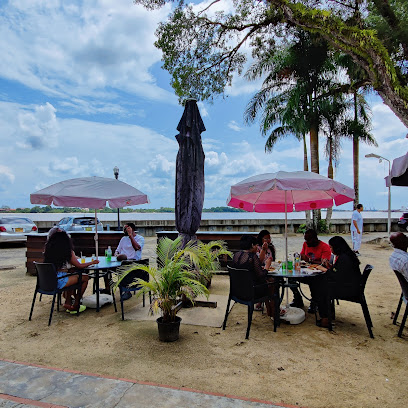
Roline's de Waag
Discover Roline's de Waag: A vibrant restaurant offering exquisite tapas, live music, and historical charm along Paramaribo's scenic waterside.

Padre Nostro
Discover authentic Italian cuisine and irresistible ice cream at Padre Nostro in Paramaribo – a true culinary gem!

Baka Foto
Discover the flavors of Suriname at Baka Foto, where history meets culinary delight in Paramaribo's iconic Fort Zeelandia.

Afobaka Resort
Experience tranquility and adventure at Afobaka Resort, a hidden gem nestled in Suriname's lush landscapes.

Bamboo Green Garden
Experience authentic Chinese cuisine at Bamboo Green Garden in Paramaribo - where every dish tells a story.
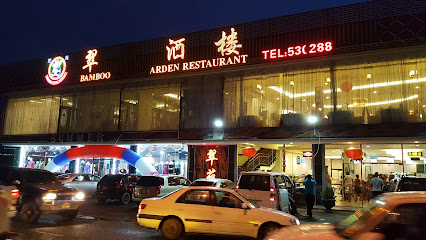
Fun Tu
Experience authentic Chinese cuisine at Fun Tu in Paramaribo—where traditional flavors meet local charm for an unforgettable dining adventure.

Pane E Vino
Experience authentic Italian cuisine at Pane E Vino in Paramaribo—where every dish tells a story of tradition and flavor.

Grand Roopram Roti Restaurant
Experience authentic Indian flavors at Grand Roopram Roti Restaurant in Suriname - where every bite tells a story.

Iro Indo Restaurant
Savor authentic Indonesian flavors at Iro Indo Restaurant in Bernharddorp - a must-visit for food lovers seeking unique culinary experiences.
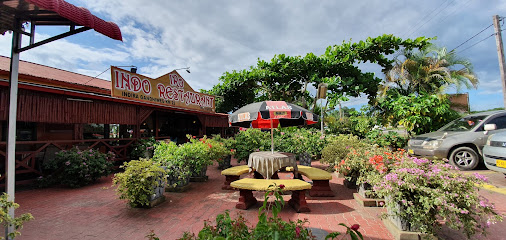
Warung Sonate
Discover the rich tastes of Suriname at Warung Sonate - where authentic cuisine meets warm hospitality.

Pepper pot restaurant
Discover authentic Surinamese flavors at Pepper Pot Restaurant - a culinary oasis nestled in nature's embrace.

Oleh Alice
Experience authentic Surinamese cuisine at Oleh Alice in Tamanredjo – a culinary gem that showcases diverse flavors and warm hospitality.

Bori Tori
Experience authentic Surinamese cuisine at Bori Tori, where every meal tells a story of tradition and flavor.

CHICK BLAST
Discover vibrant flavors at Chick Blast in Paramaribo – where local meets international cuisine for an unforgettable dining experience.

Markets, malls and hidden boutiques
Kirpalani Super Store (KSS)
Explore Kirpalani Super Store in Paramaribo for a mix of local treasures and international brands in a vibrant shopping atmosphere.

Kirpalani's N.V.
Discover the ultimate shopping experience at Kirpalani's N.V. in Paramaribo, where local craftsmanship meets international brands.

Highway warenhuis
Discover the ultimate shopping experience at Highway Warenhuis, a premier department store in Suriname offering a wide range of products for every taste.

Red Century Party Shop
Discover the colorful world of party supplies and unique gifts at Red Century Party Shop in Paramaribo, Suriname.

Unique Supermarket
Explore the vibrant flavors of Suriname at Unique Supermarket, a delightful blend of local and international products in Paramaribo.

Brokopondo
Explore the beautiful Brokopondo, a serene campground in Suriname, perfect for outdoor adventures and nature experiences.

SASS Creations
Explore SASS Creations in Suriname, your go-to destination for unique gifts, local crafts, and a taste of Surinamese artistry.

Skana's Online Shopping
Explore Skana's Online Shopping in Lelydorp for stylish local clothing and accessories, perfect for refreshing your wardrobe with unique finds.

Winkel Wong A Sang
Discover the charm of Winkel Wong A Sang in Redi Doti, Suriname, where local flavors and unique treasures await every traveler.

Julie's Giftshop
Discover a world of Surinamese culture at Julie's Giftshop, where unique souvenirs and local crafts await your exploration.

JY Fashion
Explore JY Fashion in Paramaribo for unique gifts and local crafts that embody the beauty and culture of Suriname.

Zandery Store
Experience the vibrant flavors of Suriname at the Zandery Store, your go-to grocery destination in Zanderij for fresh produce and local delights.
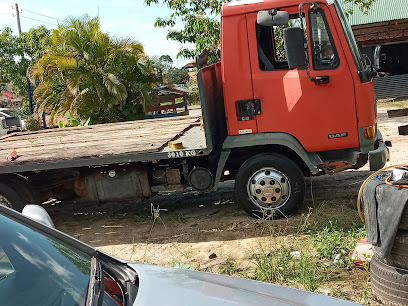
Supermarkt Weewee MD(Menkie)
Explore the vibrant shopping experience at Supermarkt Weewee MD in Kadjoe, where local culture and international goods meet.

Fashion Capital
Explore Lelydorp's Fashion Capital for trendy clothing, unique local finds, and an unforgettable shopping experience in Suriname.

Shana Cadeaux Suriname
Discover the essence of Suriname at Shana Cadeaux, your premier destination for unique gifts and local craftsmanship in Barkoesingweg.

Essential bars & hidden hideouts
D'Bar
Experience the vibrant nightlife at D'Bar in Paramaribo, where local culture meets lively entertainment and unforgettable flavors.

Bar Excellente Suriname
Discover the lively atmosphere of Bar Excellente in Paramaribo, where delicious cocktails and vibrant nightlife await every visitor.

Broki
Experience the vibrant nightlife of Paramaribo at Broki, where every night is a celebration with music, dance, and refreshing drinks.

Aloi
Discover the vibrant atmosphere of Aloi, a lively bar in Paramaribo, offering refreshing drinks and a taste of local nightlife.
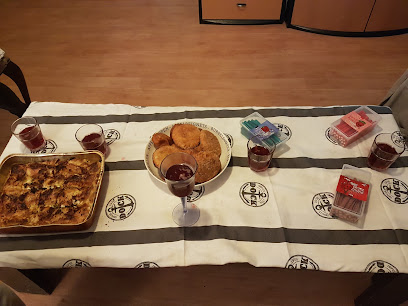
Soerin Bar
Experience the vibrant nightlife of Paramaribo at Soerin Bar, where local flavors and friendly vibes come together in a lively atmosphere.

Wang Ten Bar
Experience the vibrant nightlife of Suriname at Wang Ten Bar, where friendly service and a lively atmosphere await.
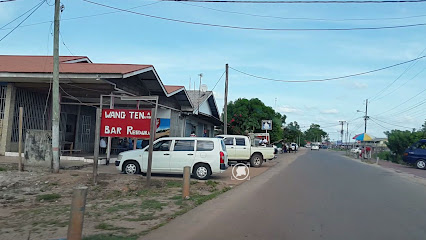
Blondie EscoBar
Discover the vibrant nightlife of Meerzorg at Blondie EscoBar, where local flavors and a lively atmosphere await every visitor.

Reggae Bar
Experience the vibrant atmosphere of Reggae Bar in Hanover, Suriname, where delicious food and lively reggae music create unforgettable moments.

Tipsy Bar & Lounge
Discover the vibrant atmosphere of Tipsy Bar & Lounge, a perfect spot for delicious food, refreshing drinks, and unforgettable nights in Paramaribo.

Parapasi lounge
Indulge in mouth-watering grilled dishes at Parapasi Lounge, a top destination for food enthusiasts in Onverwacht, Suriname.

Mr.Cocktail
Discover refreshing cocktails in the heart of Lelydorp at Mr. Cocktail, the perfect spot to unwind and enjoy a vibrant atmosphere.

NW. HAVEN BAR
Discover the vibrant nightlife of Paramaribo at NW. Haven Bar, a cultural hotspot for drinks, music, and lively local interactions.

RIT'tem Lounge
Experience the thrill of live sports at RIT'tem Lounge, a vibrant sports bar in Meerzorg, Suriname, perfect for food and fun.
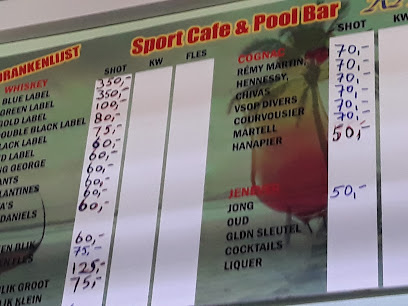
Bar gezelligheid
Discover the vibrant atmosphere of Bar Gezelligheid in Paramaribo, where local culture meets a lively bar experience for all tourists.

Varo's Betting
Discover the lively atmosphere and local flavors at Varo's Betting, a must-visit bar in Paramaribo, Suriname.
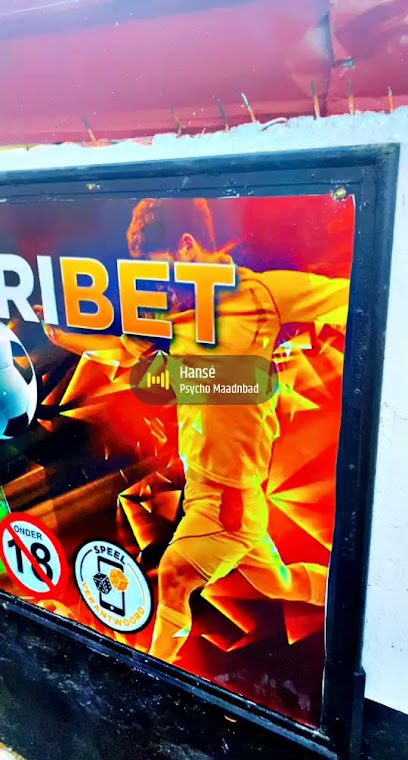
Local Phrases
-
- HelloHallo
[ha-loh] - GoodbyeAyo
[ah-yo] - YesYa
[yah] - NoNee
[nee] - Please/You're welcomeMi begi
[mee bay-gee] - Thank youMasha danki
[mah-sha dahn-kee] - Excuse me/SorrySori
[soh-ree] - How are you?Fa yu de?
[fah yoo deh?] - Fine. And you?Boni. En yu?
[boh-nee. en yoo?] - Do you speak English?Yu taki Ingles?
[yoo tah-kee een-glehs?] - I don't understandMi no sabi
[mee noh sah-bee]
- HelloHallo
-
- I'd like to see the menu, pleaseMi wani si a menu, mi begi
[mee wah-nee see ah meh-noo, mee bay-gee] - I don't eat meatMi no eeti meti
[mee noh ay-tee meh-tee] - Cheers!Proost!
[prohst] - I would like to pay, pleaseMi wani pai, mi begi
[mee wah-nee pah-ee, mee bay-gee]
- I'd like to see the menu, pleaseMi wani si a menu, mi begi
-
- Help!Ruku mi!
[roo-koo mee!] - Go away!Go na fesi!
[goh nah fay-see!] - Call the Police!Bel Polisi!
[bell poh-lee-see!] - Call a doctor!Bel wan dokter!
[bell wahn dock-ter!] - I'm lostMi de kwi kwijt
[mee deh kwee kwate] - I'm illMi de sik
[mee deh seek]
- Help!Ruku mi!
-
- I'd like to buy...Mi wani bai...
[mee wah-nee bye...] - I'm just lookingMi de kibri
[mee deh kee-bree] - How much is it?Fa prisiri?
[fah pree-see-ree?] - That's too expensiveDati de te duur
[da-tee deh teh door] - Can you lower the price?Yu kan meki a prisiri ondro?
[yoo kahn meh-kee ah pree-see-ree on-droh?]
- I'd like to buy...Mi wani bai...
-
- What time is it?Fa ten de?
[fah ten deh?] - It's one o'clockNa wan taki
[nah wahn tah-kee] - Half past (10)Half ten
[hahf ten] - MorningMownin
[moh-win] - AfternoonNeti
[neh-tee] - EveningAnu
[ah-noo] - YesterdayFeri
[fay-ree] - TodayDen de
[dehn deh] - TomorrowMorgen
[mohr-ghen] - 1Wan
[wahn] - 2Tu
[too] - 3Dri
[dree] - 4Fowru
[foh-ru] - 5Fife
[fai-feh] - 6Siksi
[seek-see] - 7Sebi
[seh-bee] - 8Aiti
[eye-tee] - 9Nown
[nohn] - 10Tien
[teen]
- What time is it?Fa ten de?
-
- Where's a/the...?Fa a/the...de?
[fah ah/the...deh?] - What's the address?Fa a adres?
[fah ah ah-dres?] - Can you show me (on the map)?Yu kan sori mi (na a mapu)?
[yoo kahn soh-ree mee (nah ah mah-poo)?] - When's the next (bus)?Fa a neti (bus) de?
[fah ah neh-tee (bus) deh?] - A ticket (to ....)Wan tiketi (te ....)
[wahn tee-keh-tee (teh ....)]
- Where's a/the...?Fa a/the...de?
History of Brokopondo
-
Long before European colonization, the area now known as Brokopondo was inhabited by indigenous tribes, notably the Arawak and Carib peoples. These communities lived off the rich resources of the rainforest, practicing hunting, fishing, and small-scale agriculture. They developed complex societies with unique cultural traditions that still influence the region today.
-
During the 17th and 18th centuries, Dutch colonizers began to explore the interior of Suriname, including Brokopondo. The area was initially used for small-scale plantations and resource extraction. However, the dense jungle and difficult terrain made large-scale colonization challenging. The Dutch often relied on enslaved Africans and indigenous peoples for labor, which led to significant cultural and demographic shifts.
-
The harsh conditions of slavery led to the rise of Maroon communities, composed of escaped enslaved Africans. These communities, including the Saramaka and Ndyuka, settled in remote areas like Brokopondo. They developed autonomous societies, maintaining African traditions and engaging in frequent resistance against colonial forces. The Maroon culture remains a vital part of Brokopondo’s heritage.
-
In the 1960s, the construction of the Afobaka Dam dramatically transformed Brokopondo. Built to provide hydroelectric power for aluminum production, the dam created the Brokopondo Reservoir, one of the largest man-made lakes in the world. This development led to the displacement of many local communities, significantly altering the social and environmental landscape. The dam remains a crucial part of Suriname's energy infrastructure.
-
The establishment of the town of Brokopondo was closely linked to the Afobaka Dam project. Initially developed to house workers, the town grew into a regional hub. Today, Brokopondo serves as an administrative center and gateway for tourists exploring the natural beauty of the surrounding rainforest and lake. The town reflects a blend of modern amenities and traditional lifestyles, providing a unique glimpse into the region’s evolving identity.
-
In recent decades, Brokopondo has emerged as a popular destination for eco-tourists. The region offers a wealth of natural attractions, including the Brokopondo Reservoir, lush rainforests, and diverse wildlife. Efforts to promote sustainable tourism have led to the development of eco-lodges and guided tours, aimed at preserving the environment while providing economic opportunities for local communities. This focus on ecotourism highlights Brokopondo’s commitment to balancing development with conservation.
Brokopondo Essentials
-
Brokopondo is located in the Brokopondo District of Suriname. The nearest international airport is Johan Adolf Pengel International Airport (PBM) in Zanderij, approximately 90 kilometers away. From the airport, you can take a taxi or arrange for a private transfer to Brokopondo, which typically takes around 2 hours by road. Public buses and minibuses (locally known as 'bush taxis') also operate regular routes from Paramaribo to Brokopondo.
-
Within Brokopondo, the primary mode of transportation is by road. Taxis are available but may not be as frequent as in larger cities. Renting a car is a convenient option for exploring the area at your own pace. For shorter distances, consider hiring a bicycle or simply walking, especially if you are staying near the lake or in the town center. Bush taxis are also an affordable way to navigate between neighboring villages.
-
The official currency in Suriname is the Surinamese Dollar (SRD). Credit cards are accepted in some hotels and larger establishments, but it is advisable to carry cash, especially when visiting smaller shops, local markets, or rural areas. ATMs are available in Brokopondo, but it is wise to withdraw sufficient cash in Paramaribo before traveling to ensure you have enough funds.
-
Brokopondo is generally a safe destination for tourists. However, like any travel destination, it is advisable to take standard precautions. Avoid walking alone at night in unfamiliar areas and keep an eye on your belongings in crowded places. While Brokopondo does not have specific high-crime areas targeting tourists, it is always best to stay vigilant and aware of your surroundings.
-
In case of emergency, dial 115 for medical emergencies or 110 for police assistance. The local police station and medical facilities are available in Brokopondo. It is recommended to have travel insurance that covers medical emergencies. For minor health issues, there are pharmacies in the town where you can purchase over-the-counter medications.
-
Fashion: Do dress modestly, especially when visiting religious or cultural sites. Avoid wearing overly revealing clothing. Religion: Do respect local customs and traditions. Always ask for permission before photographing religious ceremonies or sites. Public Transport: Do be respectful and courteous to fellow passengers. Don't eat or drink on public transport. Greetings: Do greet people with a friendly smile and a handshake. A polite greeting in Dutch or Sranan Tongo is appreciated. Eating & Drinking: Do try local dishes and accept food offerings graciously. Don't refuse hospitality, as it is considered impolite.
-
To experience Brokopondo like a local, visit the local markets where you can buy fresh produce and traditional Surinamese goods. Engage with locals, as they are often friendly and willing to share stories about the area's history and culture. Don't miss a visit to the Brokopondo Reservoir and the Afobaka Dam, which offer stunning views and opportunities for boating and fishing. For a unique experience, consider staying in a local guesthouse or eco-lodge, which provides an authentic taste of life in Brokopondo.
Nearby Cities to Brokopondo
-
Things To Do in Lelydorp
-
Things To Do in Mariënburg
-
Things To Do in Moengo
-
Things To Do in Paramaribo
-
Things To Do in Albina
-
Things To Do in Skeldon
-
Things To Do in New Amsterdam
-
Things To Do in Kwakwani
-
Things To Do in Ituni
-
Things To Do in Linden
-
Things To Do in Bartica
-
Things To Do in Anna Regina
-
Things To Do in Lethem
-
Things To Do in Kamarang
-
Things To Do in Princes Town






